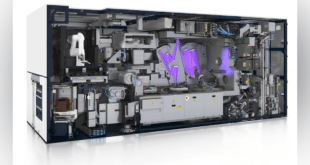Introduction:
In our interconnected world, wireless communication serves as the backbone of modern society, from bustling libraries to remote scientific outposts. As we marvel at the capabilities of current networks, researchers worldwide are already envisioning the future of communication in 6G networks. Imagine a world where instant communication powers virtual reality experiences and enables remote surgery. This vision is closer to reality than you might think, thanks to a recent breakthrough in laser technology.
Imagine a world where surgeons operate robots from continents away, unhindered by latency. Or picture virtual reality experiences so immersive, they blur the line between reality and simulation. These dreams, once confined to science fiction, are inching closer thanks to a revolutionary breakthrough: laser-based communication for 6G.
Unlocking the Secrets of 6G
For 6G to deliver near-instantaneous communication, researchers need wider channels capable of handling massive data loads. A recent study published in IEICE Electronics Express offers a glimpse into the future, using lasers to create these high-speed channels.
A team of researchers from Osaka University and IMRA AMERICA has shattered records by harnessing the power of lasers to enhance data transmission speeds. Published in the IEICE Electronics Express journal, their study unveils a promising breakthrough in wireless communication using lasers.
The Key to Breakthrough:
Their key innovation lies in tackling system noise, a significant hurdle in high-frequency communication. Traditional electrical signal generators struggle with limitations in speed and stability. These limitations are primarily due to phase noise, a phenomenon that introduces jitter and errors into the data signal. This noise ultimately restricts the maximum achievable transmission rate.
They achieve this by leveraging photonics, the science of light, in the sub-terahertz band (ranging from 100 GHz to 300 GHz). By utilizing photonics in a sub-terahertz band ranging from 100 GHz to 300 GHz, they’ve unlocked unprecedented transmission rates.
Multi-Level Signal Modulation:
The Magic Behind 6G To achieve near-instantaneous communication in 6G networks, researchers rely on multi-level signal modulation. This technique allows for packing large volumes of data into the sub-terahertz band while maintaining rapid response times. However, operating at such high frequencies poses challenges, particularly regarding noise sensitivity.
This method crams vast amounts of data into the sub-terahertz band while maintaining rapid transmission speeds. However, operating at such high frequencies comes with a challenge: multi-level signal modulation is highly susceptible to noise, especially when dealing with the precise reference signals it requires.
The Photonic Signal Generator: A Game Changer
The research team, led by Keisuke Maekawa, tackled this bottleneck by introducing a photonic device-based signal generator. By utilizing a stimulated Brillouin scattering laser, they generated incredibly precise signals, significantly reducing phase noise compared to conventional methods.
The research team tackled this challenge by employing a stimulated Brillouin scattering (SBS) laser. This laser leverages light-matter interactions to generate exceptionally clean and precise signals. Here’s how it works:
- Stimulated Brillouin Scattering: A powerful laser beam interacts with sound waves (phonons) within a specially designed optical fiber. This interaction amplifies a specific frequency component of the laser light, creating a highly stable and narrow-line emission.
- Reduced Phase Noise: Compared to traditional electrical methods, the SBS laser produces signals with significantly lower phase noise. This translates to cleaner data transmission with fewer errors.
“This issue has limited 300 GHz communications so far,” explains Maekawa, the study’s lead author. “We discovered that at high frequencies, a photonic device-based signal generator generates a significantly cleaner signal compared to a conventional electrical one.”
Record-Breaking Transmission Rates:
By harnessing the power of the SBS laser, the researchers achieved a phenomenal single-channel transmission rate of 240 gigabits per second (Gbps). This surpasses all previous records for data transmission over a 300 GHz-band frequency.
The researchers employed a stimulated Brillouin scattering laser, which exploits the interaction between light and sound waves, to generate an incredibly precise signal. By implementing this laser-based signal generator in both the transmitter and receiver of a 300 GHz wireless communication system, they achieved a single-channel transmission rate of a staggering 240 gigabits per second.
Importantly, they achieved this feat using online digital signal processing, signifying the practicality of their approach for real-world applications.This achievement represents the highest transmission rate ever recorded globally using online digital signal processing.
Toward a New Era of Communication:
As 5G continues its global rollout, researchers are diligently laying the groundwork for 6G. This study marks a significant leap towards realizing 300 GHz wireless communication, a crucial building block for 6G. The researchers believe that by incorporating multiplexing techniques and developing more sensitive receivers, data rates could skyrocket to 1 terabit per second. This would usher in a new era of near-instantaneous global communication, transforming how we connect and interact with the world around us.
Conclusion:
The future of wireless communication is brighter than ever, thanks to pioneering research in laser technology. As we inch closer to the era of 6G, breakthroughs like this promise to revolutionize how we communicate, connect, and collaborate. With each milestone, we edge closer to a world where the barriers of distance are dissolved, and communication knows no bounds.
References and Resources also include;
https://interestingengineering.com/innovation/worlds-fastest-data-transmission-photonics
 International Defense Security & Technology Your trusted Source for News, Research and Analysis
International Defense Security & Technology Your trusted Source for News, Research and Analysis
